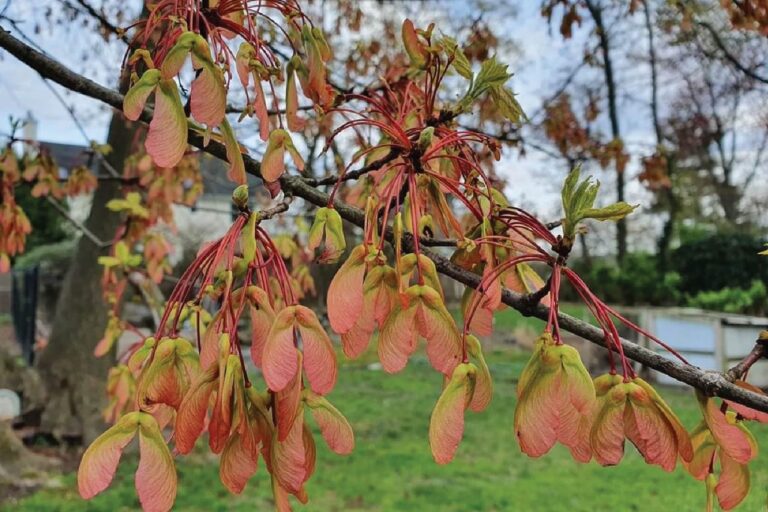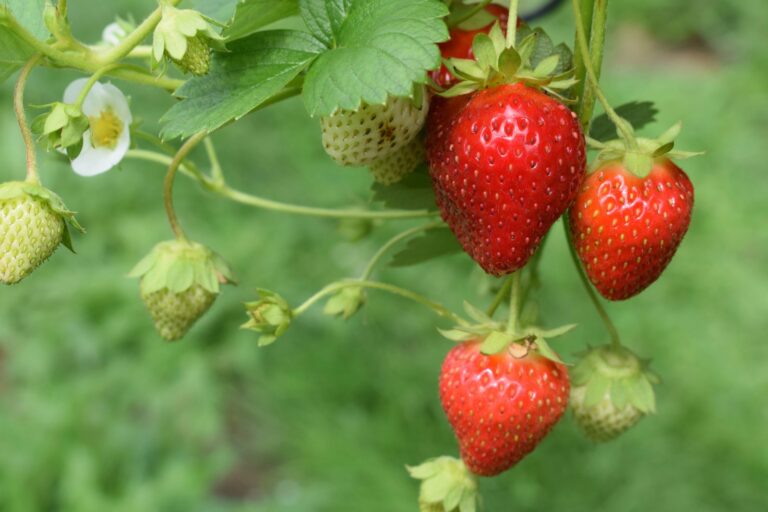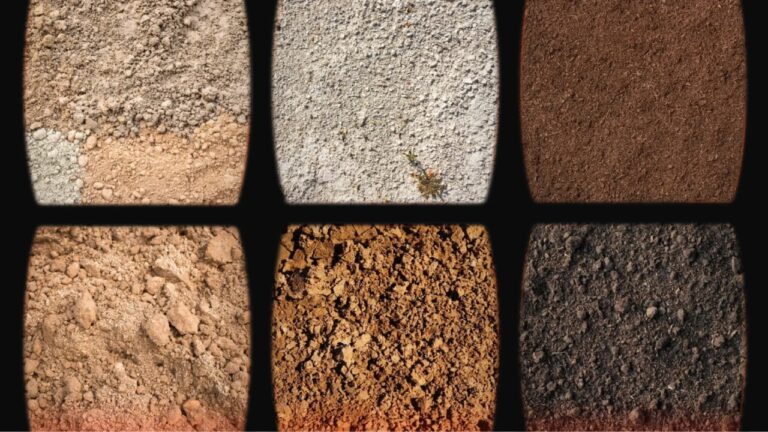Plant Propagation: 6 Exclusive Methods
Introduction
Plant propagation is a rewarding and scientifically stimulating experience that allows gardeners to grow new plants from a variety of sources. Whether you are a skilled gardener or a curious beginner, the art of propagation can provide you with a great deal of delight and satisfaction. In this comprehensive blog, we will look at the most popular and effective techniques of plant propagation, supported by scientific principles and reinforced with practical advice. Let’s explore the wonderful world of plant propagation and learn how to increase the beauty and bounty of your garden. For further information you can watch my vlog on YouTube.
Methods of Plant Propagation
In this blog we will discuss six authentic methods which will help to transform your garden in a delightful place within budget.
1. Seed Propagation: The Birth of New Beginnings
Seed propagation is one of the most natural and fundamental ways to create new plants. Seeds carry the parent plant’s genetic blueprint and, given the correct conditions, can germinate and grow into healthy plants.
Steps for seed propagation:

- Seed Selection: Select high-quality seeds from a reliable source. Look for fresh seeds that have a strong germination rate
- Soil Preparation: Use a well-drained seed-starting mixture. Fill seed trays or pots with the mixture, giving space for the seeds
- Sowing Seeds: Plant seeds according to their requirements. Some seeds must be sown on the surface, while others must be buried to a specific depth
- Watering: To prevent the seeds from being disturbed, use a misting spray.
- Light and Temperature: Provide enough light and keep the temperature optimal for germination. Some seeds demand warmth, whilst others may require lower temperatures.
- Transplanting: Once seedlings have developed a few sets of genuine leaves, they can be moved to larger pots or planted directly in the garden.
Scientific Insights:
Seed germination is a complex process that includes water absorption (imbibition), enzyme activation, and cellular respiration. Understanding the unique requirements of individual seeds, such as stratification (cold treatment) or scarification (breaking the seed coat), can considerably improve germination success.
2. Cuttings: Cloning Your Favorite Plant
In gardening plant propagation via cuttings is removing a piece of a parent plant and coaxing it to develop roots and grow into its plant. This approach is common among houseplants, shrubs, and perennials.
Types of Cuttings:

- Stem cuttings: These are taken from a plant’s stem, which often contains a few leaves and nodes
- Leaf Cuttings: This involves cutting a full leaf or a portion of a leaf.
- Root cuttings: These are taken from a plant’s roots, usually during the dormant season.
Steps for Stem Cutting:
- Selection: Select a healthy, non-flowering stem from the parent plant
- Cutting: Make a clean cut immediately below a node, about 4-6 inches long
- Preparation: Remove the bottom leaves, leaving a few on top
- Rooting Hormone: Dip the cut end in rooting hormone to stimulate root growth (optional)
- Planting: Place the cutting in a well-drained rooting media, such as perlite or a peat/sand mixture
- Care: Keep the medium wet and provide indirect lighting. Covering the cutting with a plastic bag can produce a humid atmosphere that promotes roots.
Scientific insights:
In plant propagation rooting in cuttings occurs when cells at the cut site differentiate into root cells, which is regulated by auxins (plant hormones). Proper humidity, temperature, and light conditions can improve this cellular transition and boost success rates.
3. Layering: Nature’s Method of Propagation
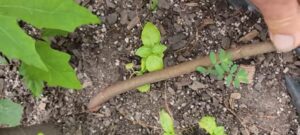
Layering is another technique of plant propagation in which a stem or branch of a parent plant is bent to the ground and covered in soil, allowing it to grow roots while remaining linked to the parent plant. Once rooted, the new plant can be separated.
Types of Layering
- Simple layering: It involves bending a single stem to the ground
- Tip layering: It occurs when the tip of a stem is covered in dirt
- Air layering: It involves wounding a portion of a stem, wrapping it in moist sphagnum moss, and covering it with plastic until roots form
Steps for Simple Layering:

- Selection: Choose a healthy, flexible stem
- Bending: Bend the stem to the ground and create a small wound on the underside
- Burying: Place the wounded portion in the ground, leaving the tip exposed
- Securing: Use a peg or stone to hold the stem in place
- Rooting: Keep the soil wet. Once the roots have developed, separate the new plant from the parent and transplant
Scientific insights:
Layering replicates natural processes in which plants spread themselves by self-rooting branches. Localized injury promotes root growth by increasing auxin concentration at the location, resulting in the creation of adventitious roots.
4. Division: Splitting for Success
Division is a simple method of plant propagation that includes dividing a mature plant into several pieces, each with its roots and branches. This strategy is best suited for perennials and grasses.
Steps for division:

- Timing: Divide plants in the dormant season or early spring
- Digging: Carefully dig up the plant and carefully shake off any extra soil
- Preparation: Before dividing, properly water the plant
- Splitting: Using a sharp knife or spade, divide the plant into sections, making sure each section has roots and shoots
- Replanting: Place each part in a prepared bed or pot, water thoroughly, and care for it as usual
Scientific Insights:
Division revitalizes mature plants by minimizing competition for resources among their roots. This strategy can improve the plant’s general health and vigor, resulting in stronger growth and greater flowering.
5. Grafting and Budding: Uniting Plants for Better Results
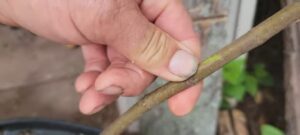
Grafting and budding are advanced plant propagation procedures that entail uniting sections of two plants so that they grow as one. These techniques are often applied to fruit trees, roses, and other woody plants.
Types of Grafting:
- Whip and Tongue Grafting: This grafting method in plant propagation, involves creating matching cuts on the rootstock and scion and attaching them together
- Cleft grafting: This technique involves inserting a wedge-shaped scion into a split rootstock
- Budding: It involves inserting a single bud from the scion into the rootstock
Steps for Whip and Tongue Grafting:
- Selection: Choose an appropriate rootstock and scion
- Cutting: Make matching slanting cuts on both the rootstock and the scion
- Joining: Align the cuts and fix them with grafting tape or wax
- Care: Place the grafted plant in a humid place until the graft heals and growth begins
Scientific Insights:
Grafting uses the plant’s capacity to heal wounds and connect different tissues. Specifically in plant propagation a healthy vascular connection requires the cambium layers of the rootstock and scion to align, allowing nutrients and water to be exchanged between the two sections.
6. Tissue Culture: High-Tech Propagation
In plant propagation tissue culture, also known as micropropagation, is a laboratory technique for growing plants from extremely small bits of plant tissue in a sterile environment. This technology is used to mass-produce plants and preserve rare or endangered species.
Steps for Tissue Culture:

- Explant preparation: involves sterilizing small pieces of plant tissue (explants) and placing them in a nutrient-rich culture medium
- Incubation: The explants are kept under controlled lighting, temperature, and humidity
- Multiplication: Explants grow into miniature plantlets that can be replicated through sub culturing
- Rooting: Plantlets are placed in a rooting medium to grow roots
- Acclimatization: Rooted plantlets are gradually acclimated to natural conditions before being planted out
Scientific Insight:
Tissue culture takes advantage of plant cells’ totipotency, which means that a single cell can regenerate into an entire plant. This approach ensures high efficiency and uniformity in plant production by creating a sterile environment and precisely controlling growth hormones.
Conclusion: Embrace the Joy of Propagation
In gardening, plant propagation is more than just a technique; it is a joyful celebration of life and progress. Each approach of plant propagation, from seed sowing to tissue culture, provides a distinct way to grow your garden and connect with nature’s wonders. By learning the scientific concepts underlying these approaches and using them with attention and enthusiasm, you can become an expert propagator and reap the unlimited benefits of growing new plants.
Whether you’re propagating your favorite houseplants, establishing a lush perennial border, or protecting a rare species, the thrill of watching new life emerge from your efforts is unrivaled. So, roll up your sleeves, gather your tools, and begin the pleasant voyage of plant multiplication. Your garden will thank you with a wealth of beauty and life.
Happy gardening!


